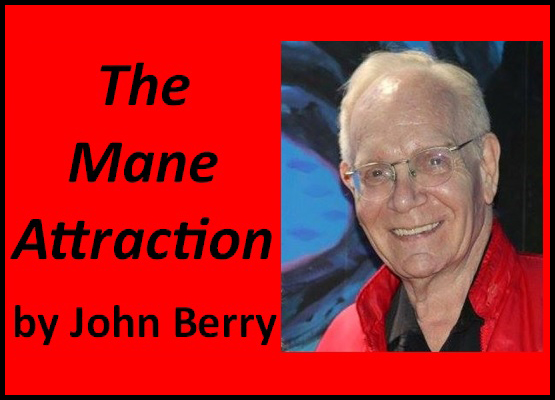As much as we do not like to admit it, our grand sport of harness racing would be in REALLY big trouble without the casino industry gulping up properties with luscious land values and sports betting now creeping into the pockets of gamblers.
No, things didn’t work out well in Florida as the Governor threw us under the bus, but other venues, in terms of purse money, are doing very well, even without the “handle” and fans that have vanished over time.
Years ago, we had the entire bull by the horns with 25,000 folks or more showing up in New York to watch Hugh Bell and Frank Safford and Jimmy Cruise and Del Insko and Billy and Levi and Clint Hodgins and William Hudson and Stanley and Buddy and so many others plying their trade to perfection draining the dollars out the fans pockets. Bob Cherrix, too.
In Chicago, it wasn’t quite 25,000—maybe 15,000—to see Bob Williams and Gene Riegle and Billy Shuter and Colonel Kidwell and Jack Hankins and Harry Burright…Jacques Grenier and Joe Marsh, Jr., as well. And, of course, Chris Boring and Snake Willis.
And out west in California…great crowds at Hollywood Park and Santa Anita with Russell Valles Key, Jim Dennis, Lou Rapone, Charlie King and Jack Williams, Jr., to name a few, come quickly to mind.
Yes, coast to coast and in between at Scioto Downs with Bob Seabrook (of free-legged Four Oaks fame) and George Ursitti (Bye Time) and up a bit north and west to Hazel Park with Wally McIlmurray and Harold Story, harness racing was really popular…and that was in a much slower 2:00-2:02 era era.
What? You’ve never heard of these guys?
That’s the point.
As time goes by, the way we are going, nobody is going to remember Timmy or Trace…Matt Kakaley and Dave Palone…or Yannick or Dexter…David Miller…
We hardly ever hear J.C.’s name come up anymore…or Billy O…or Ron Pierce…
Yes, there’s Brax (23) and Brett Beckwith (20) and Brandon Parker (24) and Joey Putnam (25) to name a trifecta of up-and-coming stars…and hopefuls that have shown talent like Adarryl Gates (22) and Carson Conrad (18 and Jeremy Bobbitt (25) and Marvin Luna (21), but the number of drivers in the “under 25” category is very, very few.
It’s not like baseball where Ruth and Gehrig and Jackie Robinson and Ty Cobb and Honus Wagner will never be forgotten.
Also, we are losing our aging fans due to the inevitable with very few replacements to take their place.
The attrition is understandable…but still painful and troublesome.
Everything changes in our world day-by-day and year-by-year.
Competition is the culprit and harness racing can’t stand competition and does little or nothing to put up a defense.
Yes, The Red Mile has lowered takeouts on exotics and put up much needed guarantees on some of them, as well…and other tracks use the Strategic Wagering platform on occasion which is “better for the bettor,” but, in reality, while that puts a bandaid on a cut, the whole industry is profusely bleeding…and we need to do something bold.
From the illegal numbers racket that turned into the lottery, the casino explosion and sports betting, the competition for the gaming dollar is intense and there are two choices—do nothing or do something.
Pari-mutuel handle for harness and thoroughbred racing in the U.S. in 2022 was $12,108,807,335—that $12 billion.
Now that’s not a paltry amount… but much of that was on the thoroughbred level and my guess is that harness racing will have betting totals in the “neigh”borhood of $1.8 or $1.9 billion in 2023.
So, many owners, trainers, drivers and breeders should be thanking their lucky stars that they are racing for $450,000,000 to $500,000,000 in purse money when, based on handle, that figure might be around only around $90,000,000 to $100,000,000.
That means a $20,000 purse would be only $4,000…and the purse for a “4” claimer would be $800. Thanks the lord for stakes races where owners have had to keep horses eligible with their periodic payments!
The breeders are really the ones that have benefitted the most with yearling prices at sales they way they are bolstered by these “overnight” purses beyond the age of, say, four.
To show you how fortunate harness racing is in this day and age in the “purse” category, much of the population loves to spend a dollar or two as they dream of winning the lottery (with their takeout of up to 50%).
In fact, U.S. Lottery “handle” was around $98 BILLION. Talk about beating the odds, some of us are happy to cash a ticket at 2/1 or 7/2 or 10/1. In a “Pick-6” lottery game, the ODDS AGAINST (p, 5, 1:50.1, $1,403,938 for you old-timers) are 13,983,816 to 1. In the bigger games, the odds can be over 292 million to 1.
So, the lottery is a draining factor for our pari-mutuel dollars.
Legal sports betting handled $93.2 BILLION in wagers last year—a 60% plus increase over the prior year.
Sports betting is a draining factor for our pari-mutuel dollars.
This all began just a few years ago—2018—when the Supreme Court overturned the Sports Protection Act of 1992 for Professional and Amateur Sports opened the gates for a States legalization of sports betting.
That’s why, for years, Las Vegas was the hub of it all.
It started in June of 2018 with just three States and now has around 30 States on the roster.
In that initial month, the handle on sports betting was close to $310,000,000 and, by January of 2019, it crossed the BILLION dollar threshold.
Fast forward to last year—2022—and there wasn’t a single month where sports betting handle was under $4.5 billion with November and December eclipsing $10,000,000,000…thanks to the NFL.
Depending on the bettors success, “holds” were between 2.9% and and 11.8 percent with the aggregate total through June of this year a smidgen over 8%.
Monthly totals have been over $11,000,000,000 on occasion, depending on the season.
Since legalized widespread sports betting became legal, New Jersey has surpassed Las Vegas as the handle leader with Las Vegas now second but New York is next and rapidly gaining ground.
Illinois, Pennsylvania and Indiana are next.
Notice anything?
Nevada (Sports Handle $33 billion to date) does have a plan for a track in Pahrump and New Jersey ($38.8 billion), New York $24.5 billion), Indiana ($12.5 billion) and Pennsylvania ($22 billion) are in the top five with Michigan ($10 billion), Ohio ($3.4 billion).
Harness racing is either doing very well purse-wise or improving.
Illinois is high up on the list at $23.3 billion and, hopefully, something can be done to resurrect the industry that is so rich in harness racing history.
Kentucky, Maine and Nebraska are, as they say in baseball, in the on deck circle and, of course, there are other States that may join the fray in the future with those “tax dollars” a big lure.
Also, it is estimated that over $40 BILLION is bet illegally on sports—the only reason it’s mentioned is that it may also have a minute affect on our pari-mutuel wagering.
That, too, is a drain on pari-mutuel dollars.
Add it all up and the total is close to $300,000,000,000 (yes, that’s BILLION) and, all of a sudden, reality sets in that our $1.8 or $1.9 BILLION handle accounts for 0.63 percent of our betting dollars…and that’s IS paltry!
So, here’s a revitalization plan for increasing ON-TRACK attendance to go along with the “FILL IT OR KILL IT” plan.
I’ve hinted at this before…but, since nothing has been done, I’ll say it again…
LOWER THE TAKEOUT TO Z-E-R-O for those that attend and wager on the races LIVE.
Actually it’s the same principle of using a percentage of revenue to bolster purses or giving the bettor a similar lure with free slot play.
Here’s an example using Eldorado Gaming at Scioto Downs.
In a recent month at their casino, over 19% of their credits won were “promotional” distributions, probably in the form of free play on slot machines, or, as they might say, VLT’s.
The amount of money wagered at the track is so negligible these days that it would take around $20,000,000 in on-track wagers to approximate the amount of free credits distributed to their loyal track clientele.
Reward the loyal bettors with a zero takeout. After all, they are on the casino grounds and may play in the casino, especially with a racing program coupon for $5 in free slot play!
Two sets of prices would be posted after a race is official—JUST LIKE WHEN TWO SETS OF PRICES WERE POSTED IN NEW YORK FOR ON-TRACK AND OTB PATRONS.
Here are a couple of lures that would be “better for the bettor!”
On win wagering, here’s a short “example” list of payoffs (17%-25% takeout).on track and (at simulcasting venues).
WIN
10 to 1…$22.00 ($18.20)
8 to 1…$18.00 ($14.80)
9 to 2…$11.00 ($ 9.00)
EXACTA
$30.00 ($ 24.00)
$75.00 ($ 60.00)
$200.00 ($160.00)
TRIFECTA
$ 60.00 ($ 45.00)
$300.00 ($225.00)
$500.00 ($375.00)
These are just a few of the many bets, including exotics, that would be “better for the bettor.”
Wouldn’t it be worth it to go to a racetrack for those loftier prices?
And, again, as mentioned, it’s just like giving the player the same value as getting a voucher for free slot play to come to the casino.
With well over 90% of wagering via the simulcasting route these days, thee cost to the venue would be negligible and well worth the effort to bring folks back to the track.
Over the past months, Mane Attraction columns have suggested ways to help our sport in these tough times facing the lethal combination of more competition and fan attrition.
From lowering on-track takeouts to recognizing “global warming” in our industry to prop bets to the need for our exclusive television network to replenishing our industry with the youth of today to equine social security to transparency in our sport…the Mane Attraction has tried to put these subjects on the front burner.
We all have seen things from Tim and Murray, too. One day, we may get too tired to tackle them. Who is going to step up to the plate?
Yes, times on the racetrack are flying by…and times are running out for a grand sport that is fading away…one fan at a time.
by John Berry, for Harnesslink

 USA
USA Canada
Canada Australia
Australia New Zealand
New Zealand Europe
Europe UK / IRE
UK / IRE



